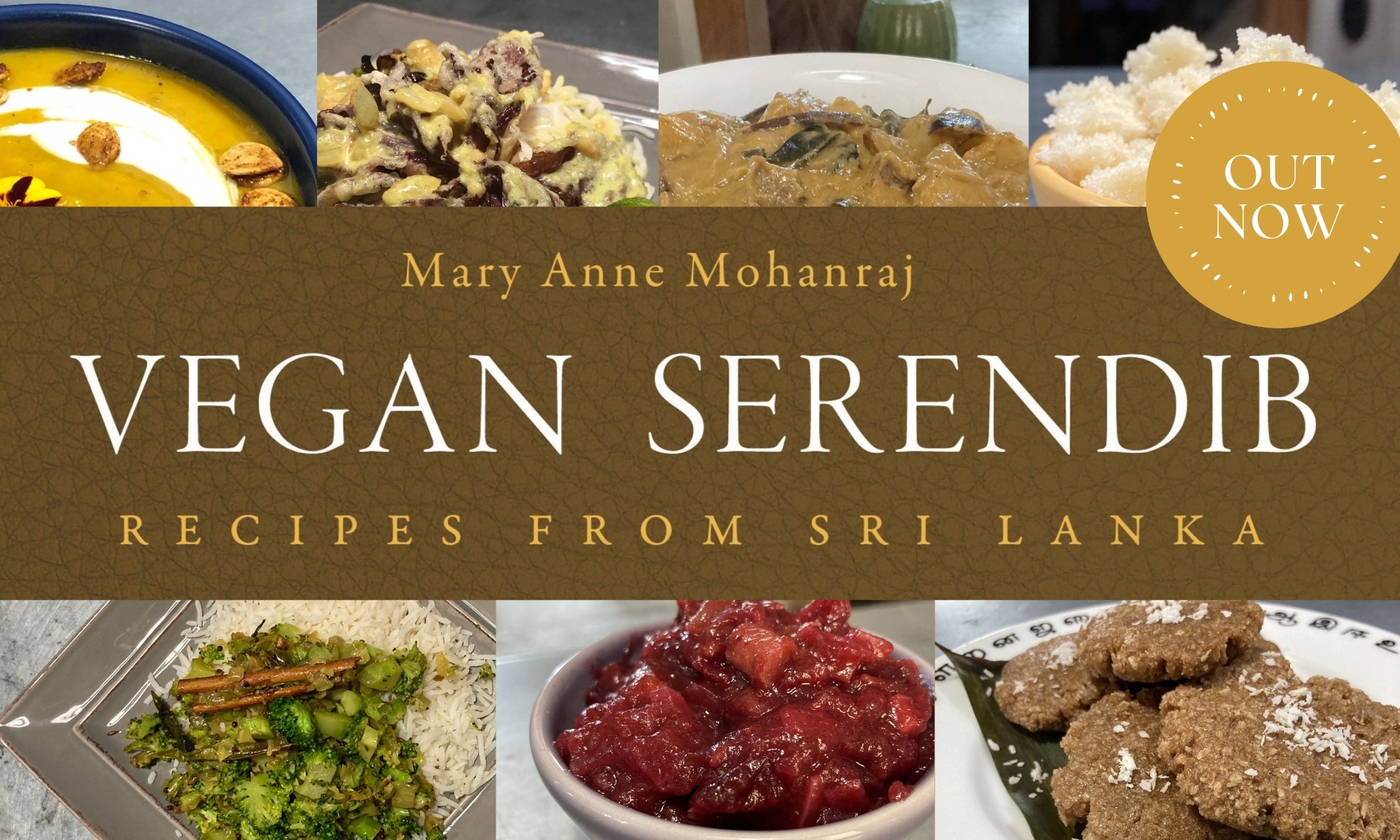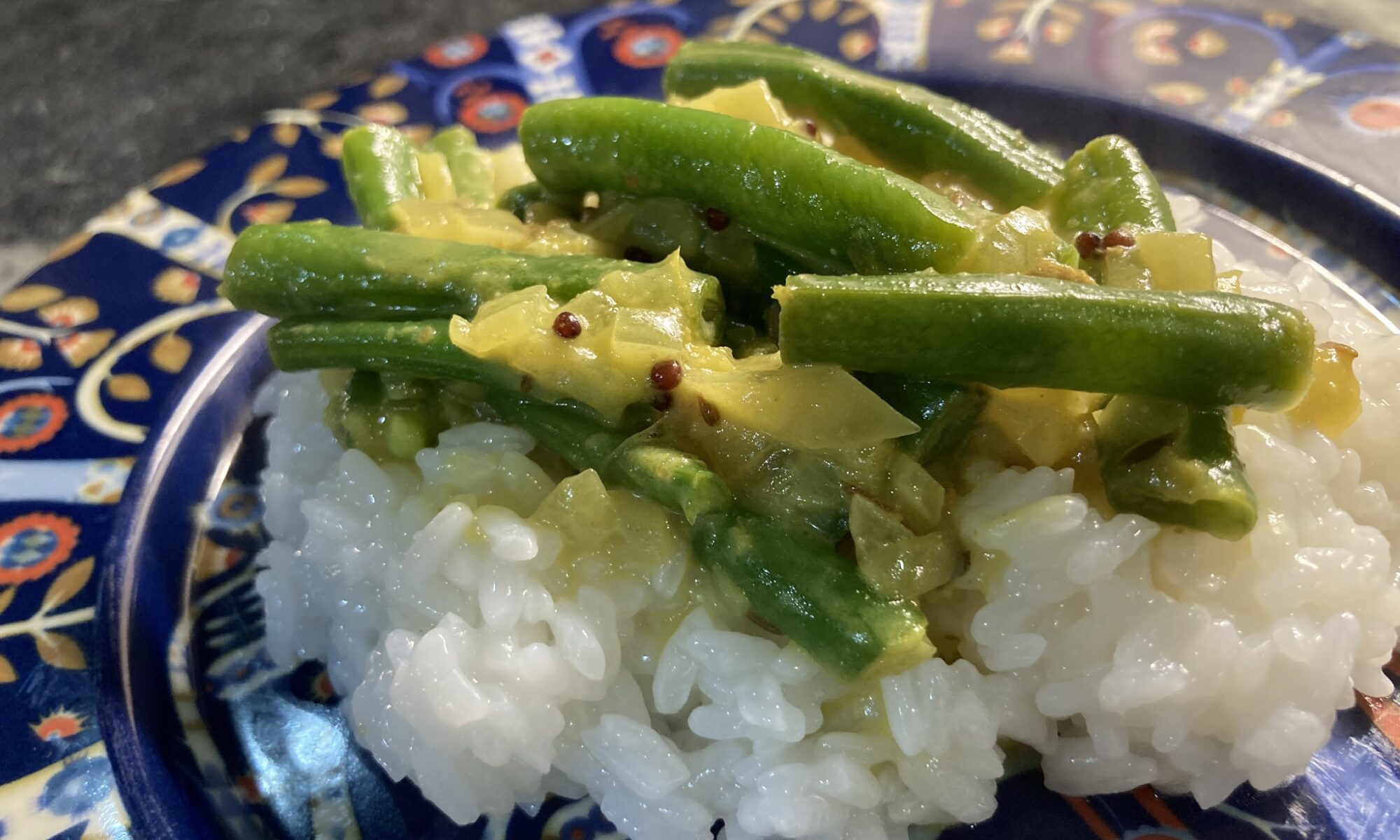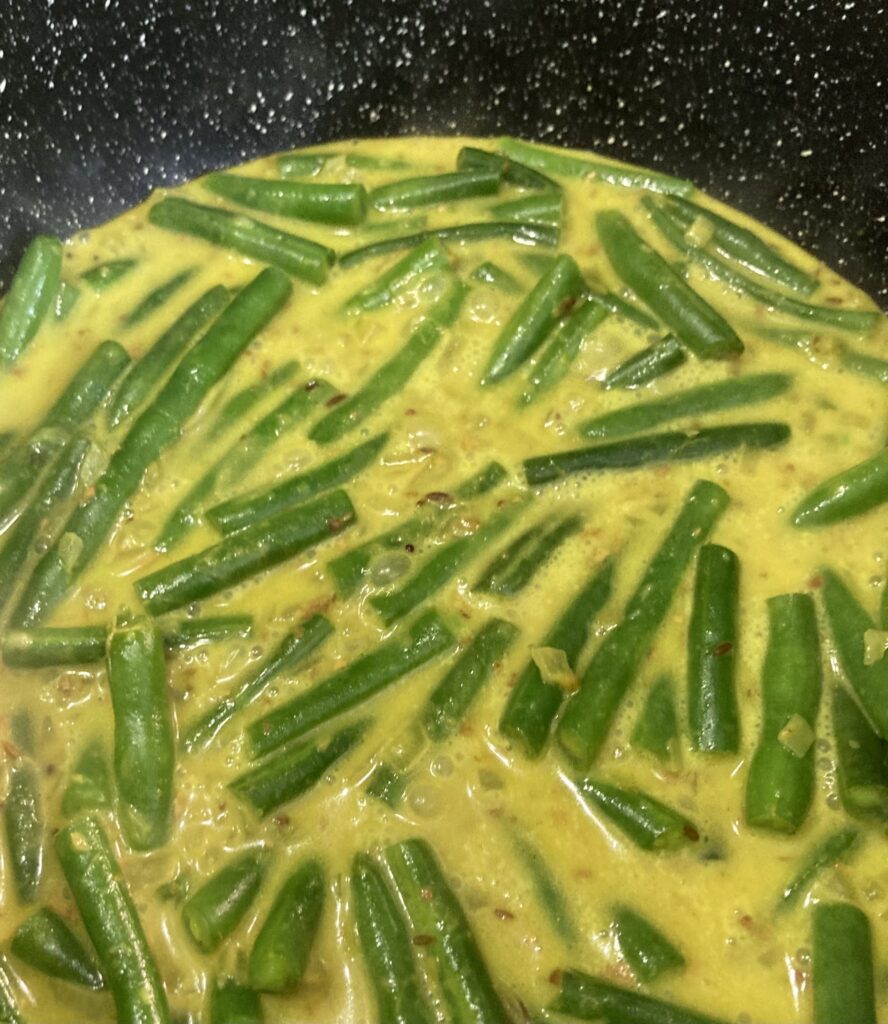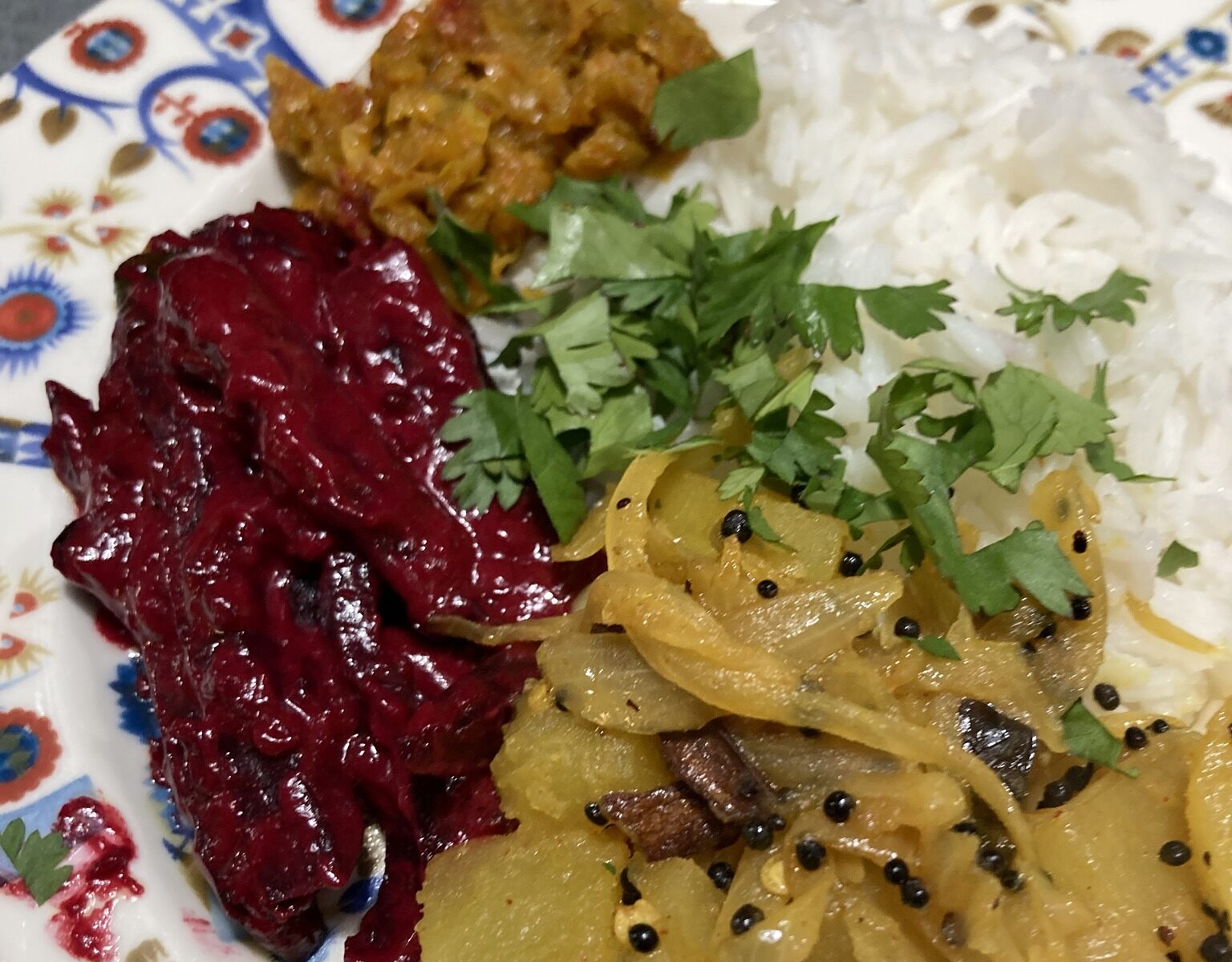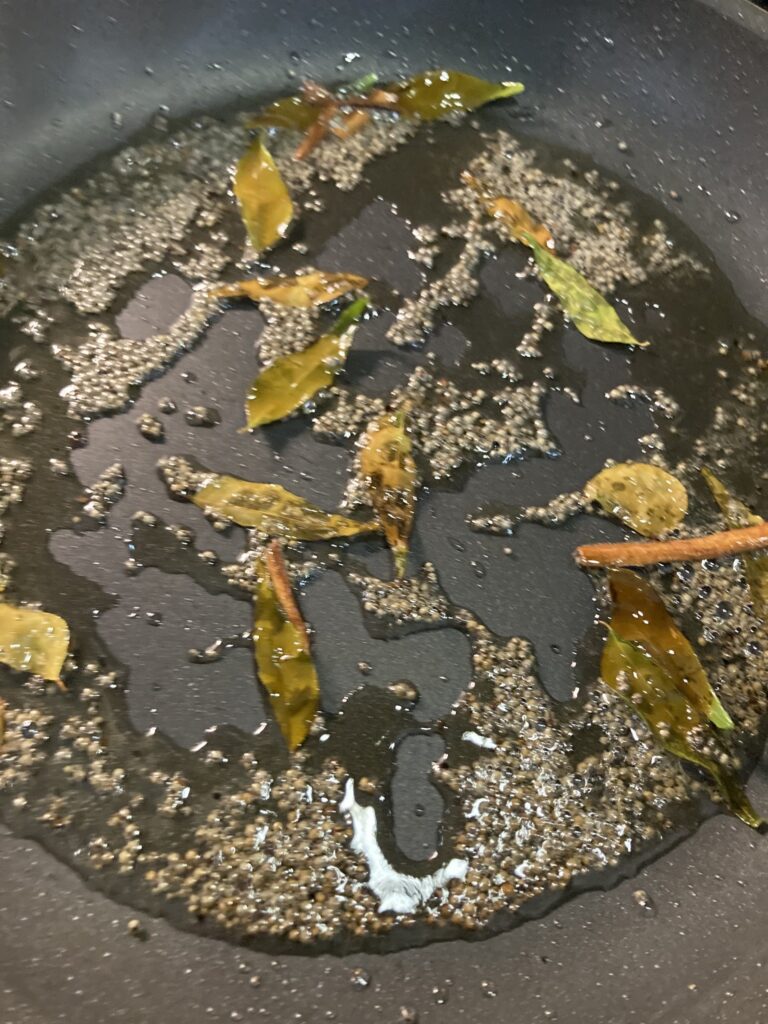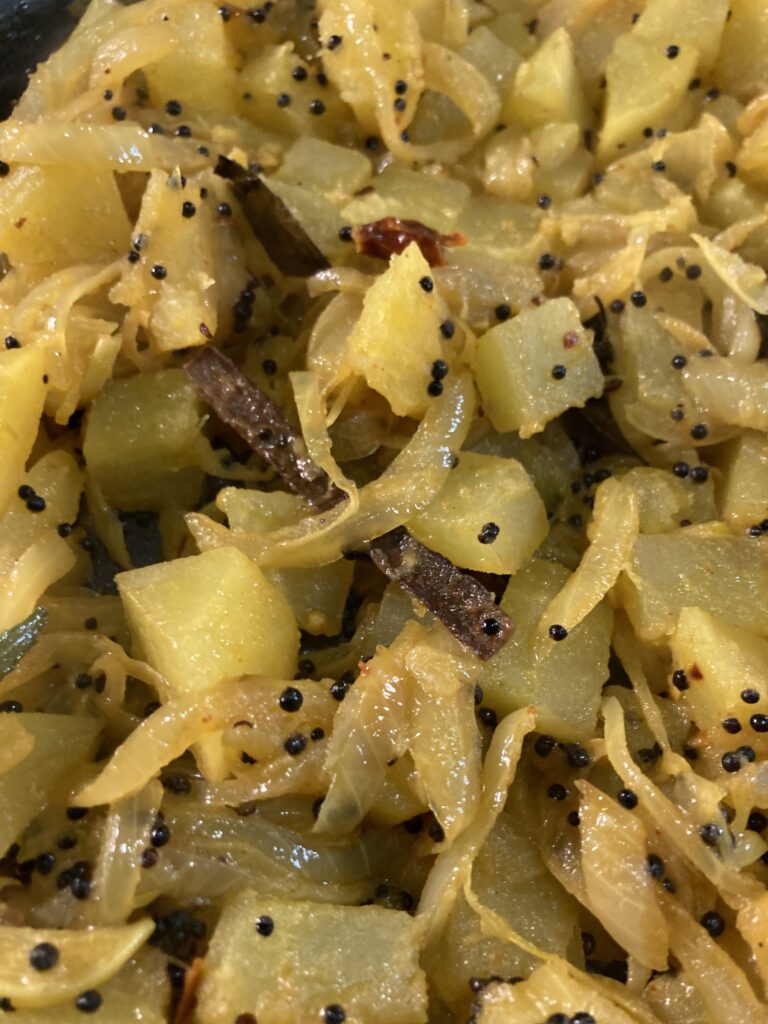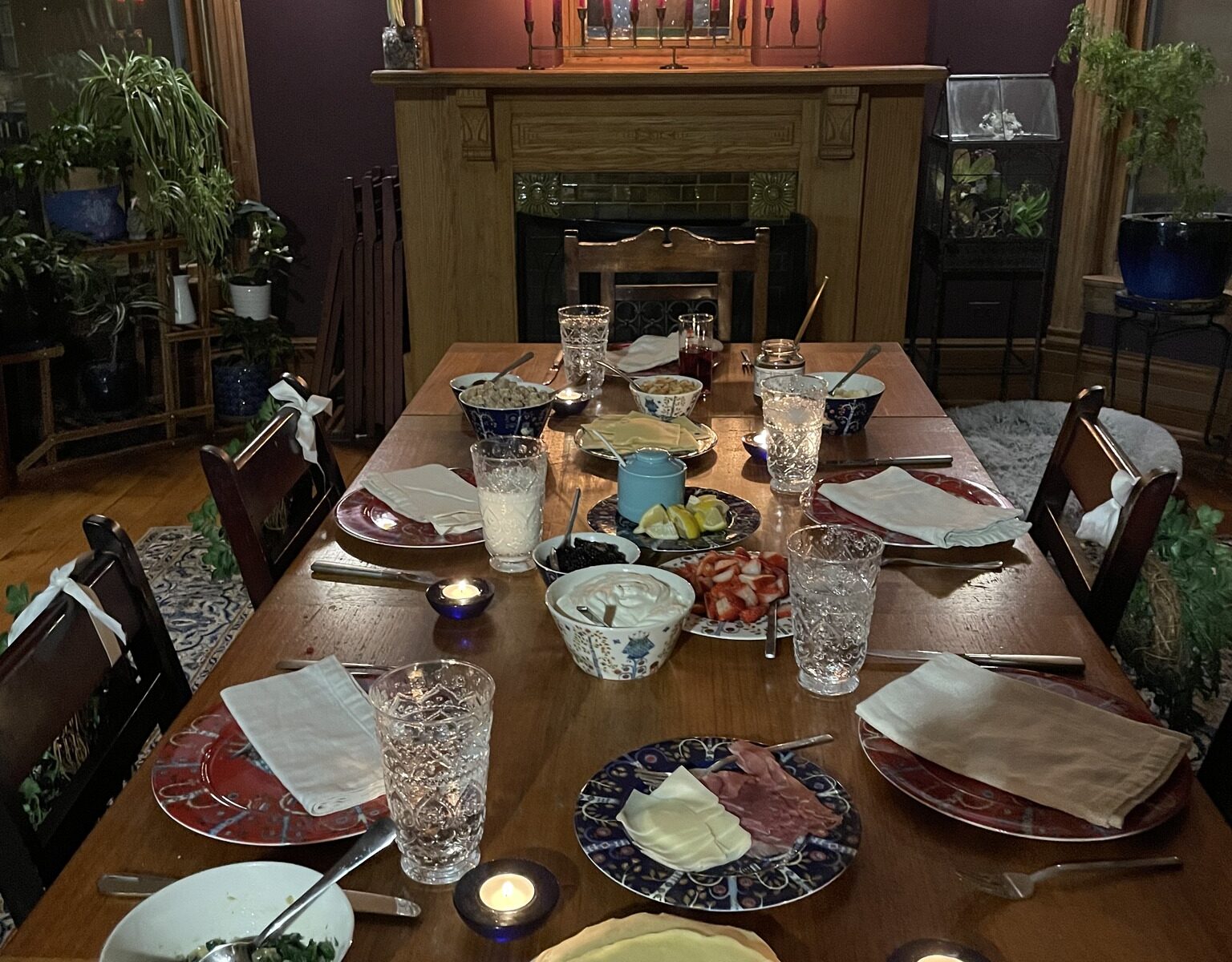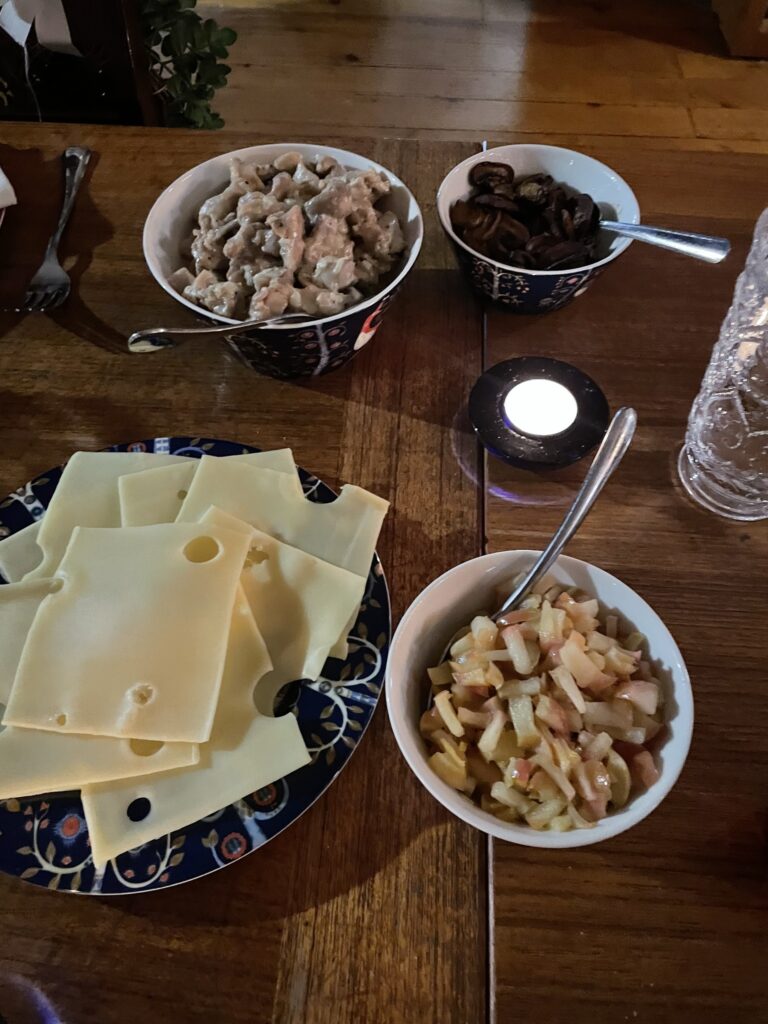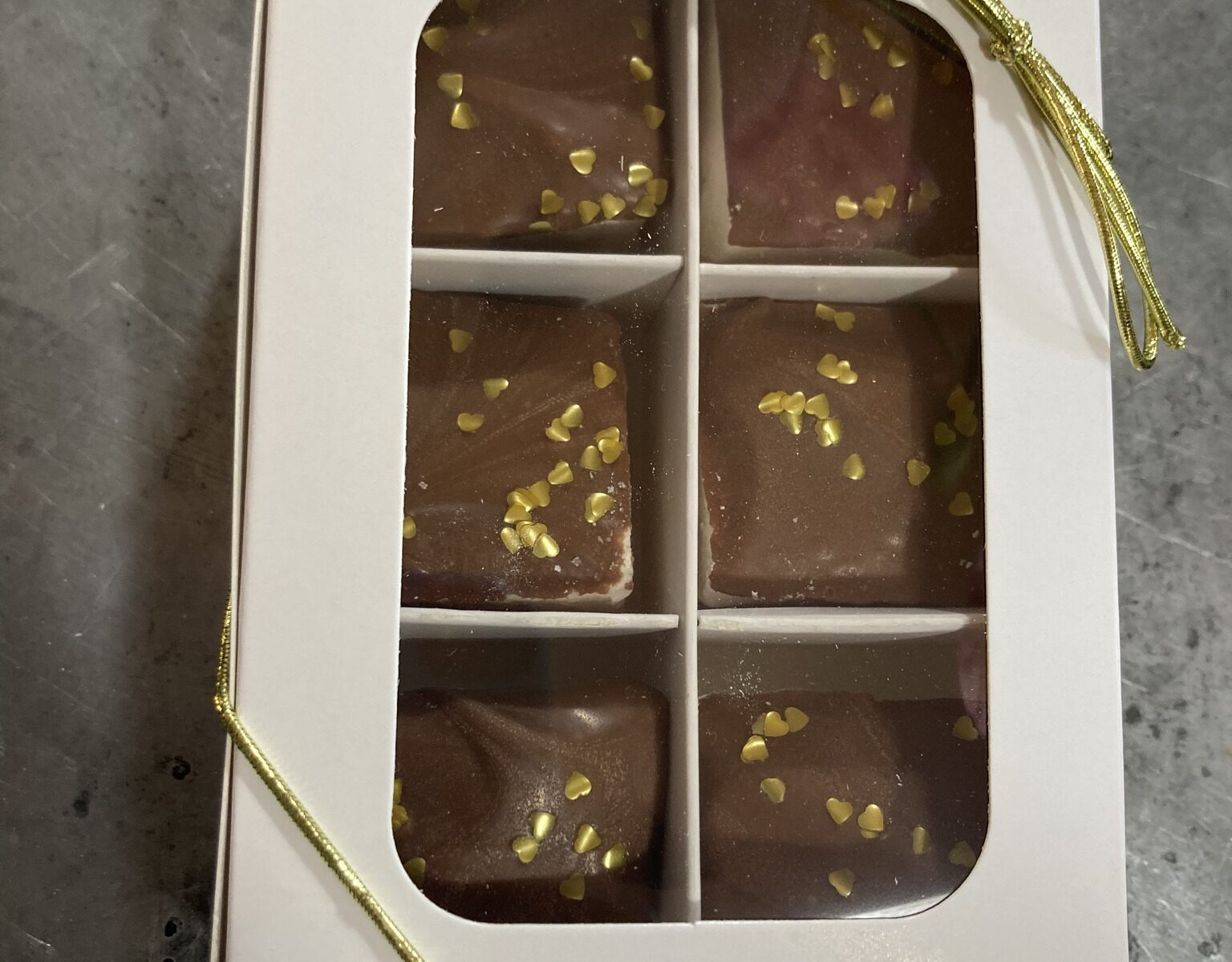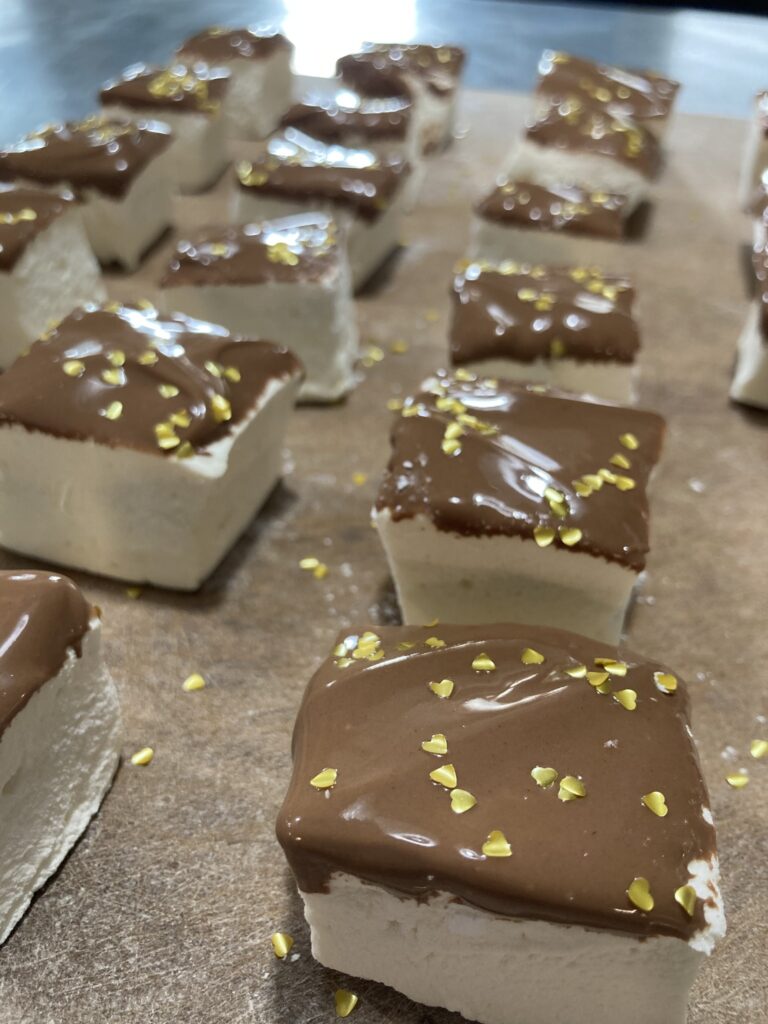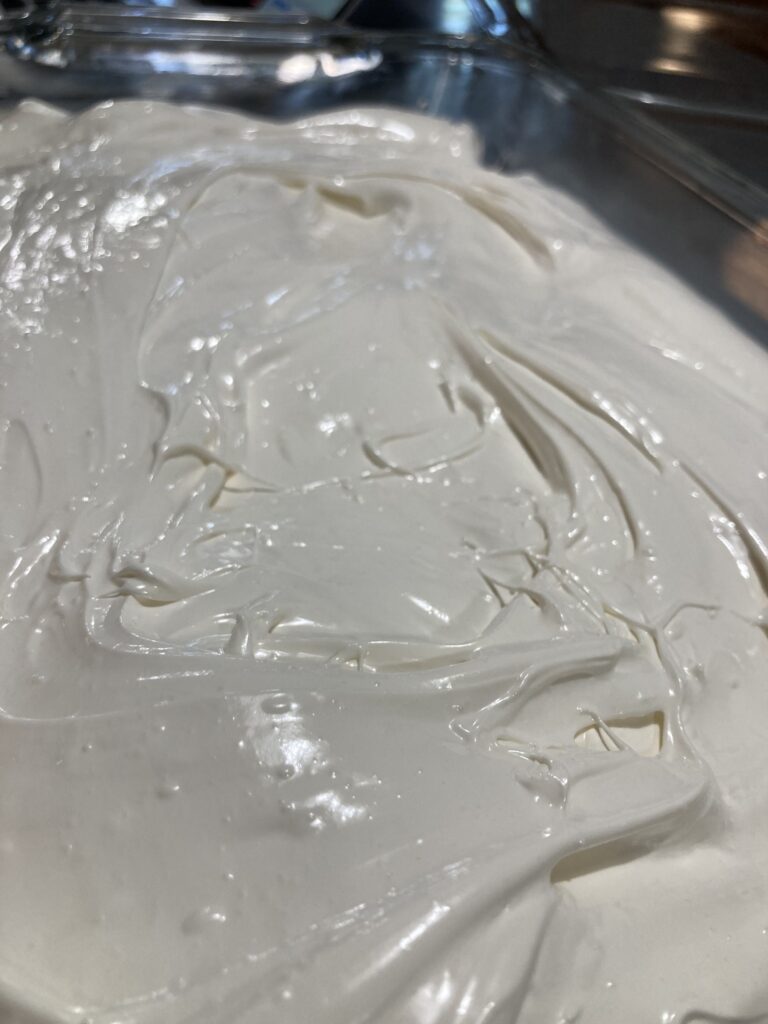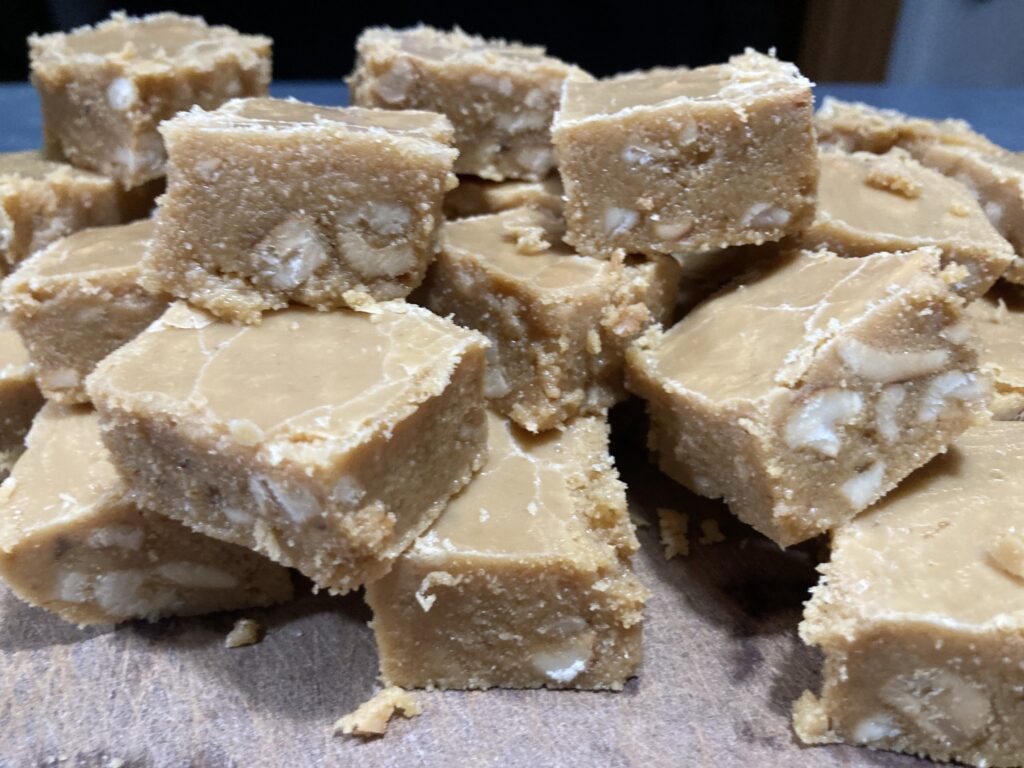Okay, so Kevin and I used to really argue about green bean curry. The thing is, Kev’s from California, right? So he’s used to really great produce, and eating lots of salads and fresh veggies, so he thinks green beans should be cooked just ’til they’re al dente, nice and crisp and bright green.
And I am totally down with that when we’re making a salad, say, and I’m going to be tossing the green beans in with some roasted potatoes and a nice dressing and other deliciousness.
But dude. It is not the right approach for curry. Kev used to say that I was ‘cooking the green beans to death.’ He hasn’t said that in a long, long time.
(Now, I’m not sure if he’s actually changed his mind on this front or not — it may be that after thirty years together, Kev’s just learned not to say things like that about my cooking. He’s a smart man. You’d have to ask him.)
The thing is, if you just cook the green beans al dente, well, they taste like green beans. And that’s fine (especially if they’re in season and you have access to great green beans).
But if you sauté them for ten minutes with the seasoned onions, and then you simmer them in turmeric and salt and coconut milk, then the green beans pick up the fabulous flavor of the curry sauce. And yes, they’re not crispy anymore, and they’re not as bright green, and people, I am here to tell you that that is OKAY.
Do you demand that green beans in your soup be crispy? You do not. Think of green beans in curry like green beans in soup, and you’ll be just fine.
Now, there isn’t actually a green bean curry recipe in either Feast or Vegan Serendib, because it’s actually pretty much the EXACT SAME RECIPE as the carrot curry. It’s our standard Sri Lankan yellow curry with vegetables, so wherever it says carrots, you just substitute green beans.
Here, I’ll do it for you — but if you’re looking in one of my cookbooks, look up the carrot curry, and then sub in green beans (or whatever other vegetable you think would be nice in a yellow curry). In fact, half carrots and half green beans make a beautiful curry and is also delicious — that’s what I’d usually do for a dinner party.
I’ll note here that the green chilies are optional — I skip them if I’m cooking for young children, and it’s still yummy. The ginger and garlic is optional too, if you’re in a rush, but it will taste better if you use them (a cube of frozen ginger-garlic works great, if your grocery store carries it, as mine just started to!).
*****
Sri Lankan Curried Green Beans
(20-25 minutes, serves 4-6)
3 medium onions, chopped
3 TBL vegetable oil
1 T ginger, minced
3 cloves garlic, chopped
3 Thai green chilies, chopped fine (optional)
1/2 tsp black mustard seed
1/2 tsp cumin seed
1 lb. green beans, ends trimmed, cut into bite-size pieces
1 rounded tsp salt
1/2 t. turmeric
1/2 – 1 c. coconut milk (can use milk instead, but be extra careful not to curdle)
1. Sauté onions in oil on high with mustard seed, cumin seed, and ginger until onions are golden. Add garlic, green beans, turmeric, and salt. Cook on medium-high, stirring frequently, until green beans are cooked through.
2. Stir in coconut milk and turn heat down to low; simmer until well-blended and flavorful, stirring frequently. Serve hot.
